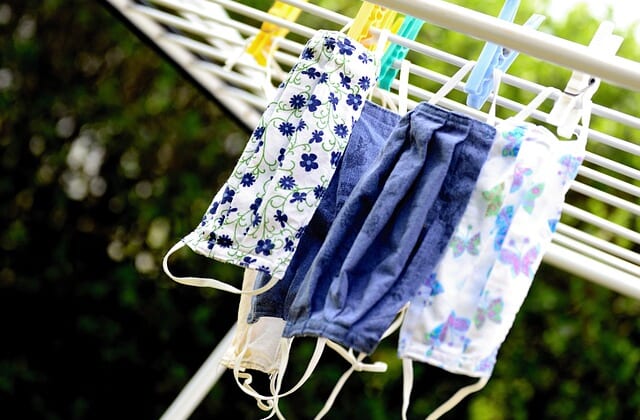
When choosing a fabric to make a homemade face mask to protect against the coronavirus, silk is better than cotton, namely when used in conjunction with a respirator, according to a new study from researchers with the University of Cincinnati.
In an analysis of what types of fabric would be best when making a homemade mask, silk took the cake, with researchers saying this material is not only comfortable but also is breathable and repels moisture – a “desirable trait in fighting an airborne virus,” per a news release on the findings.
“Silk has been with us for a while — since the days of the Silk Road,” Guerra said. “It’s not a new fabric, yet now we’re finding all these new uses for it.”
Silk contains natural antimicrobial, antibacterial and antiviral properties, and when used in conjugation with respirators, performed similarly to surgical masks, according to the study published in the journal Plos One. The researchers noted that many health care workers wear surgical masks over their N95 respirators in an effort to protect them and extend the life of an N95.
8 Reasons Why Your Wound Won’t Heal
Their findings suggest silk masks may be an equally effective alternative to surgical masks in this scenario, as surgical masks are in short supply, they said.
More specifically, it’s the copper found in silk that could prove beneficial when using this material to craft a face mask.
“Copper is the big craze now. Silk has copper in it. Domesticated silk moths eat mulberry leaves. They incorporate copper from their diet into the silk,” Patrick Guerra, assistant professor of biology at with the University of Cinncanti’s College of Arts and Sciences, said in a statement, noting that past studies have shown copper has the ability to kill bacteria and viruses upon contact.
For the study, researchers tested cotton and polyester fabric along with multiple types of silk “to see how effective a barrier each is for repelling water, representing respiratory droplets containing the virus,” per the release.
They determined that silk was far more effective as a moisture barrier than either of the other fabrics, “both of which absorb water droplets quickly,” they found.
“Cotton traps moisture like a sponge. But silk is breathable. It’s thinner than cotton and dries really fast,” Guerra said.
“The ongoing hypothesis is that coronavirus is transmitted through respiratory droplets,” he continued. “If you wore layers of silk, it would prevent the droplets from penetrating and from being absorbed. Recent work by other researchers also found that increasing layers of silk improves filtration efficiency. This means that silk material can repel and filter droplets. And this function improves with the number of layers.”
Guerra is now studying how long the virus that causes COVID-19, SARS-CoV-2, can live on silk and other materials.
